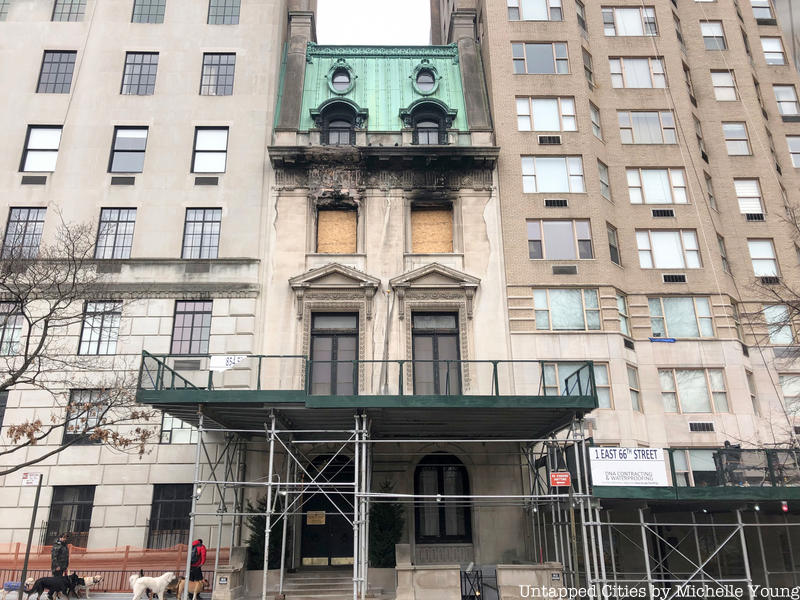11. R. Livingston Beekman Townhouse, 854 Fifth Avenue

Warren & Wetmore, the architects of Grand Central Terminal and the Yonkers Train Station, designed the Fifth Avenue home of politician R. Livingston Beekman. Beekman had knocked down the 1867 home of Wallace C. Andrew at the site to make way for his creation. Beekman’s house differed from the rest of the Gilded Age 5th Avenue mansions with its comparatively diminutive scale. The defining feature of Warren and Wetmore’s scaled-down Beaux-Arts design is the two-story mansard roof. The Landmarks Commission, which designated the building in 1969, writes effusively that “in its noble scale this house if multiplied, could form a palace. The design has a purity of style which was executed with such finesse and authority that it sets this French-style residence apart as one of the finest small townhouses extant on Fifth Avenue.”
The Beekmans spent most of their time away from Fifth Avenue at their residence in Newport, Rhode Island. Beekman would eventually become the governor of that state. As the years rolled along, development seemed to literally squeeze the Beekman house, which is now sandwiched between two large apartment buildings. In 1946, the home was converted into the Mission of Yugoslavia to the United Nations. As a result, the building has been under attack multiple times for political reasons. In 1975, a bomb shattered the windows in the building, and in 1977, three armed men barricaded themselves inside.





